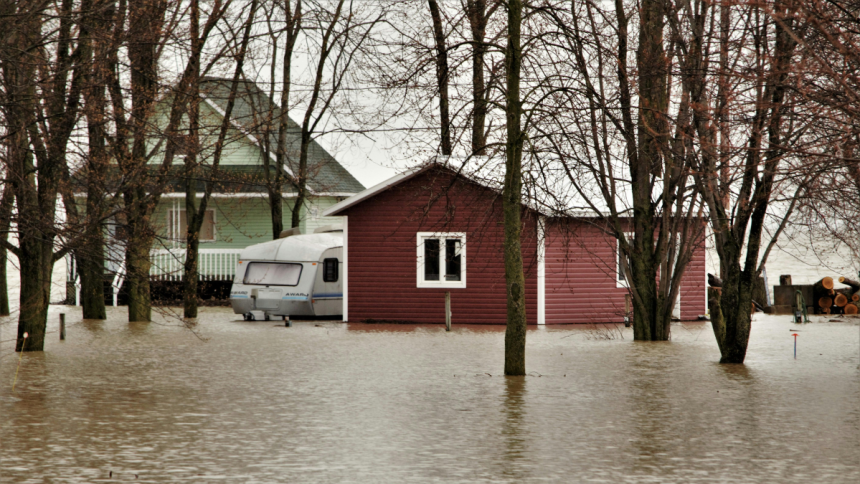Floods don’t ask permission before they destroy your life. One minute you’re home watching Netflix, the next you’re standing in contaminated water that has ruined everything you own. The aftermath feels impossible to navigate, but millions of Americans have walked this path before you.
Water damage hits about 14,000 people in the U.S. every day. The average insurance payout sits around $11,605, though that number changes based on how bad things got.
When you need residential water damage restoration, you’re basically hiring people who can turn your disaster back into a home you recognize.
The recovery process has predictable steps. Understanding them helps you make smarter decisions when everything feels chaotic.
The Real Cost of Water Damage
Flooding costs the United States between $179.8 and $496.0 billion every year, according to research from the Joint Economic Committee. That massive number represents millions of families trying to rebuild their lives one room at a time.
Your damage probably falls into one of four categories that restoration companies use. Class 1 means minor damage to part of one room. Class 4 means major structural problems from severe flooding or water that sat around too long. The category determines how much work you’re looking at and what it’s going to cost.
Safety Check Everything First
Electricity and water make a deadly combination. You can’t see all the problems water creates with wiring, so get an electrician to check everything before you spend much time inside. What looks safe might hide dangerous conditions behind walls.
Your house’s structure might have problems, too. Floodwater can shift foundations and weaken support beams in ways that aren’t obvious right away. Doors that don’t close properly or new cracks in walls tell you that something shifted.
Contaminated floodwater brings bacteria and chemicals that make people sick. Air quality testing finds mold and other nasty stuff before it becomes a bigger problem. Don’t skip this part.
Getting All the Water Out
Those little shop vacuums from Home Depot won’t cut it for serious flooding. Professional crews bring truck-mounted pumps and industrial equipment that can handle the job properly.
The tricky part is the water you can’t see. Carpets, drywall, and insulation soak up water and hold it for weeks. Even when surfaces look dry, moisture hides inside materials where it feeds mold growth.
Restoration teams use moisture meters to track what’s happening inside your walls and floors. They know when things are truly dry versus just looking dry.
Commercial dehumidifiers run constantly during this phase. The big industrial units pull moisture from the air much faster than anything you can rent. This usually takes longer than people expect, but rushing it guarantees mold problems later.
What Can Be Saved
Not everything makes it through a flood. Trying to save badly damaged materials often costs more than replacement and creates health risks your family doesn’t need.
Porous stuff usually has to go. Carpets, padding, fabric furniture, and particleboard absorb contaminated water too deeply to clean safely. These materials become breeding grounds for bacteria even after professional cleaning.
Drywall gets cut out following the “two-foot rule” most of the time. If water reached one foot high, crews typically remove drywall two feet above that line. Water travels upward through drywall, so this prevents future problems.
Insulation almost always needs replacement. Wet insulation doesn’t work and creates perfect conditions for mold. Removing it also gives crews access to check framing and mechanical systems hidden behind walls.
Hardwood floors present tough choices. Solid wood sometimes survives if dried quickly, but engineered wood and laminate usually don’t make it.
Rebuilding the Structure
Foundation problems need attention first. Flooding can undermine foundations or create settlement issues that affect everything built on top. Structural engineers figure out what needs fixing before other work begins.
Electrical systems often need complete replacement below the flood line. Modern codes require GFCI outlets in many areas, and flood damage gives you a chance to upgrade older systems.
Plumbing takes a hit, too. Contaminated water backs up through drains and can damage pipes throughout the system. Professional plumbers test everything to make sure it works safely.
Professional Help vs Going Solo
Complex restoration exceeds most homeowners’ skills and tools. Professional crews bring industrial equipment and insurance experience that DIY efforts can’t match.
Health risks multiply when you don’t know how to handle contaminated materials properly. Exposure during cleanup can make you seriously ill if you skip proper precautions.
Insurance coverage often requires professional restoration for claims to pay out. DIY cleanup might save money upfront but could cost you thousands in voided benefits.
Recovery from flood damage tests every family, but houses do come back from disasters. The secret is taking each step deliberately and getting professional help where you need it.
Lynn Martelli is an editor at Readability. She received her MFA in Creative Writing from Antioch University and has worked as an editor for over 10 years. Lynn has edited a wide variety of books, including fiction, non-fiction, memoirs, and more. In her free time, Lynn enjoys reading, writing, and spending time with her family and friends.















